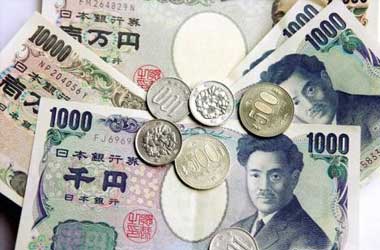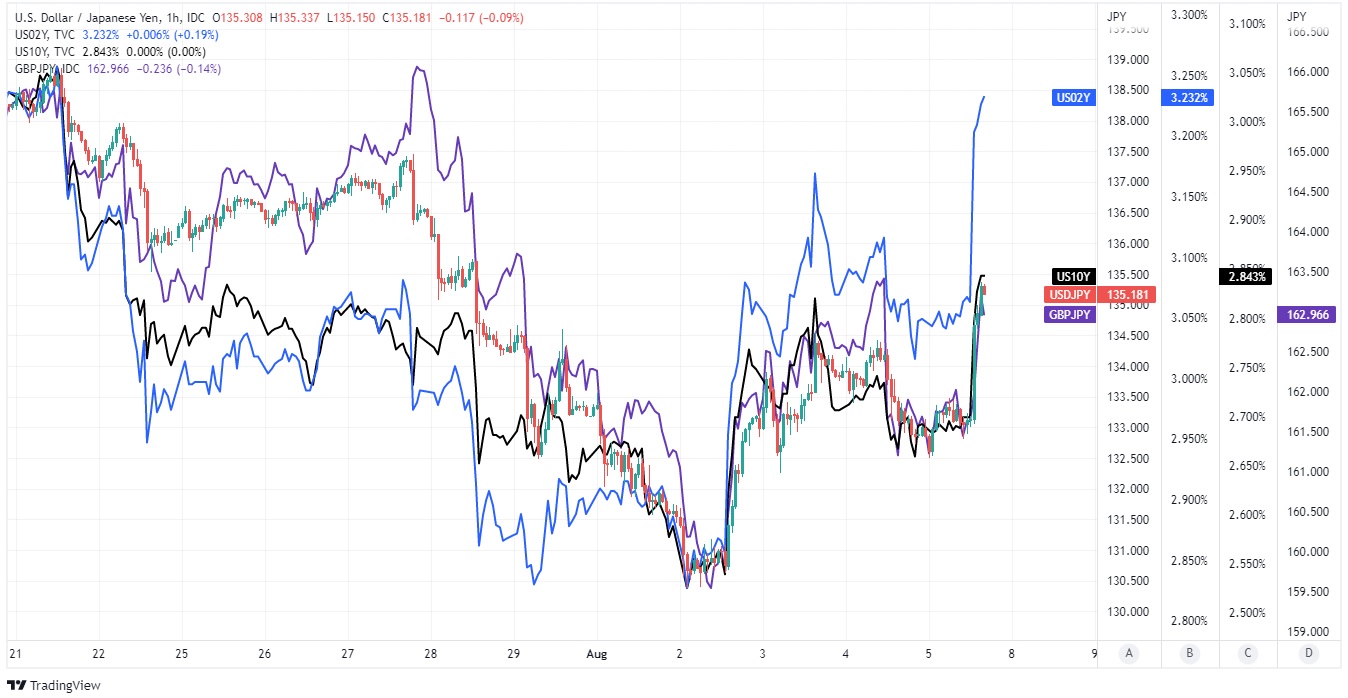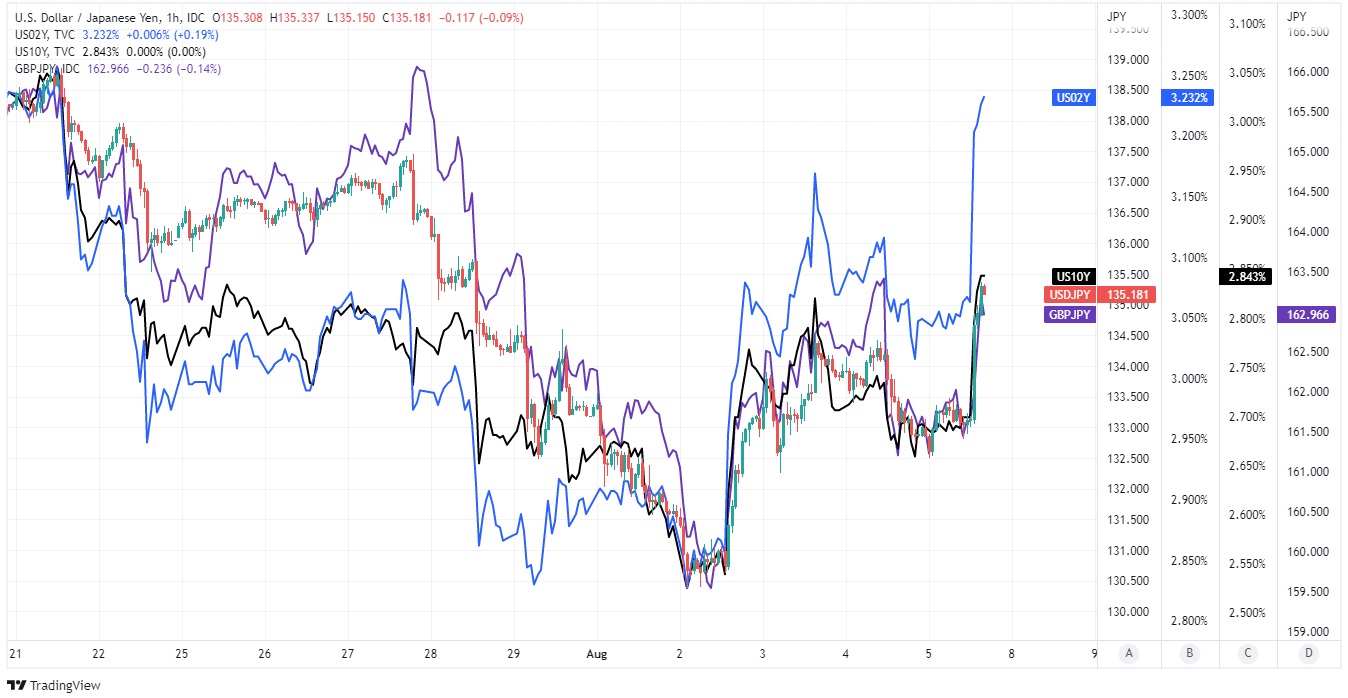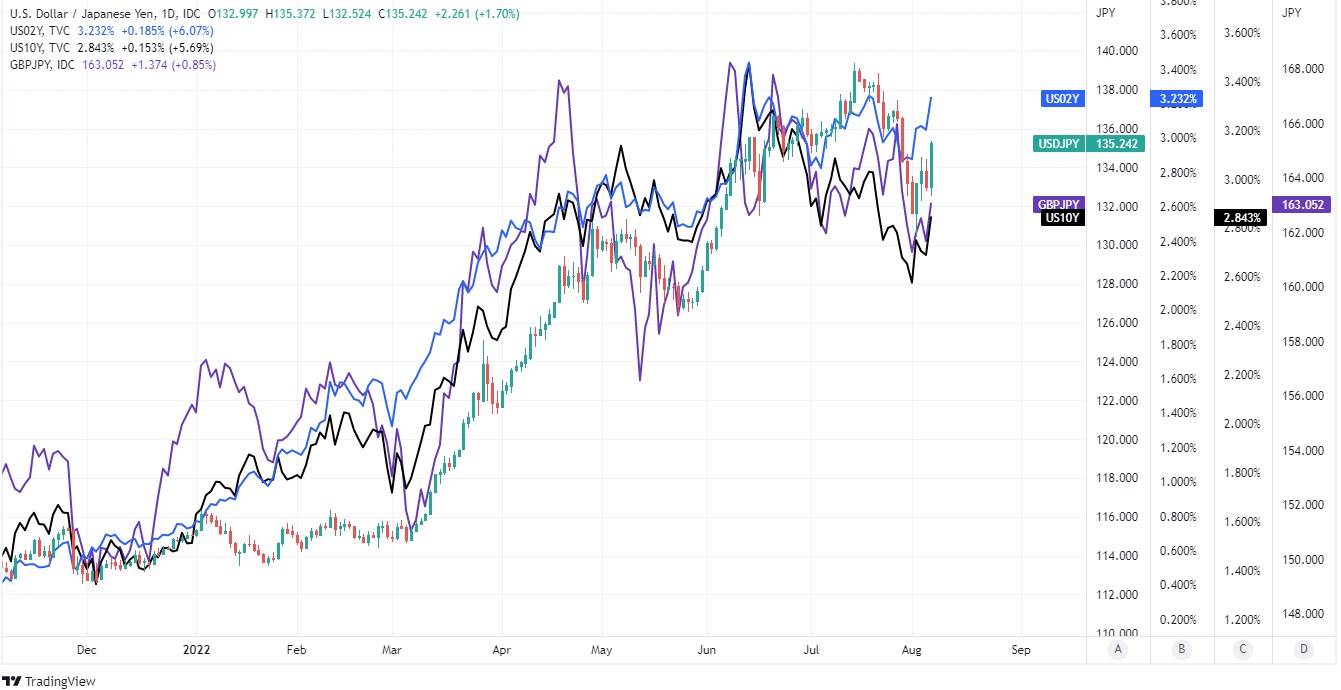 Following seemingly jaw-dropping employment and salary numbers that seemed to entice an already aggressively hawkish Federal Reserve (Fed), and stunned US government bond rates to re-emerge the Japanese yen fell across the deck in the run-up to the weekend. Japan’s Yen sank by at least three-quarters of a percentage versus all G10 currencies on Friday as official statistics presented a portrait of robust view of the U.S. labor market by showing that the economy produced more than double the jobs experts had predicted for July.
Following seemingly jaw-dropping employment and salary numbers that seemed to entice an already aggressively hawkish Federal Reserve (Fed), and stunned US government bond rates to re-emerge the Japanese yen fell across the deck in the run-up to the weekend. Japan’s Yen sank by at least three-quarters of a percentage versus all G10 currencies on Friday as official statistics presented a portrait of robust view of the U.S. labor market by showing that the economy produced more than double the jobs experts had predicted for July.
In addition, the jobless rate dropped to a multi-decade trough in July, while salaries climbed at a faster-than-expected annual rate of 5.2% in July. “The conclusion is unequivocally good for USD. Given its correlation with the Fed’s target rate, USDJPY is the most important currency pair to monitor,” according to senior FX analyst Mazen Issa of TD Securities.
Following the announcement on Friday, Issa said that based only on rate spreads, the USDJPY exchange rate should be trading over 136. The Japanese yen had benefitted more than several other currencies as a result of a decline in long-term US government bond rates during late June and July and evidently in reaction to broad opinions in the market of a worsening US economic growth forecast. This had occurred across all of late June and early July.
The official GDP estimates for the second quarter of 2018 showed a second straight drop, indicating the start of a technical recession, which seemed to validate these fears, but the employment data for July on Friday mocked this gloom. The statistics prompted a rally in dollar exchange rates and a rise in US government bond yields back toward the highs seen during the middle of June, which in turn caused the Yen to collapse to new century lows, a trend that was only interrupted in late July by market worries about the state of the US economy.
“Over the last two weeks, the short-JPY squeeze has been intense. In the period of ten days, USDJPY retraced from 139 to 131. However, we believe that correction is overused. The drop was fueled by a decline in Treasury rates, but lower yields will not alleviate the yen’s flows shortfall,” according to Greg Anderson, worldwide chief of FX strategy at BMO Capital Markets.
For the Yen as well as other currencies, the danger is rising that the financial markets will bet on the Fed raising interest rates by some other non-standard rise of 0.75% in September, which may fuel the rebound in US bond yields and send the USD/JPY pair back toward its July peaks.

“It is essential to note that there is no connection between the parameters; they are related mostly via the opinions of speculators instead of movements of Japanese real cash investors, who typically hedge the majority of their offshore bond holdings. And on that basis, those bond investors will certainly meet a challenge by the end of 2022,” BMO’s Anderson warned Thursday about the Yen and US bond rates.

“If the Fed raises interest rates by an additional 50 basis points, the cost of a rolling 1M hedge will totally offset the yield advantage of a 10Y Treasury more than a 10Y JGB. Adding that he expects USD/JPY to peak around the 139 level in three months, he said that some Japanese investors would opt to withdraw their hedged Treasury investments while others may choose to abandon their FX hedges.”

The market was on the verge of writing off the possibility of a third consecutive hike in the Fed Funds rate of 0.75 percentage points after Chairman Jerome Powell said, after the Fed’s decision in July, that the Fed would be studying US economic data carefully for hints about the proper pace to boost rates going ahead. A third consecutive increase in the Fed Funds rate of 0.75 percentage points was a scenario that got near to being wiped off by the market.
Speculation on the financial markets regarding the chances of a recession in the United States was getting dangerously near to its all-time high at this point. The Bank of Japan (BoJ) has been steadfast in its commitment to maintaining low local bond rates to promote Japan’s rebound from the coronavirus epidemic, making the Yen the most vulnerable across major currencies to rises in US bond yields.




